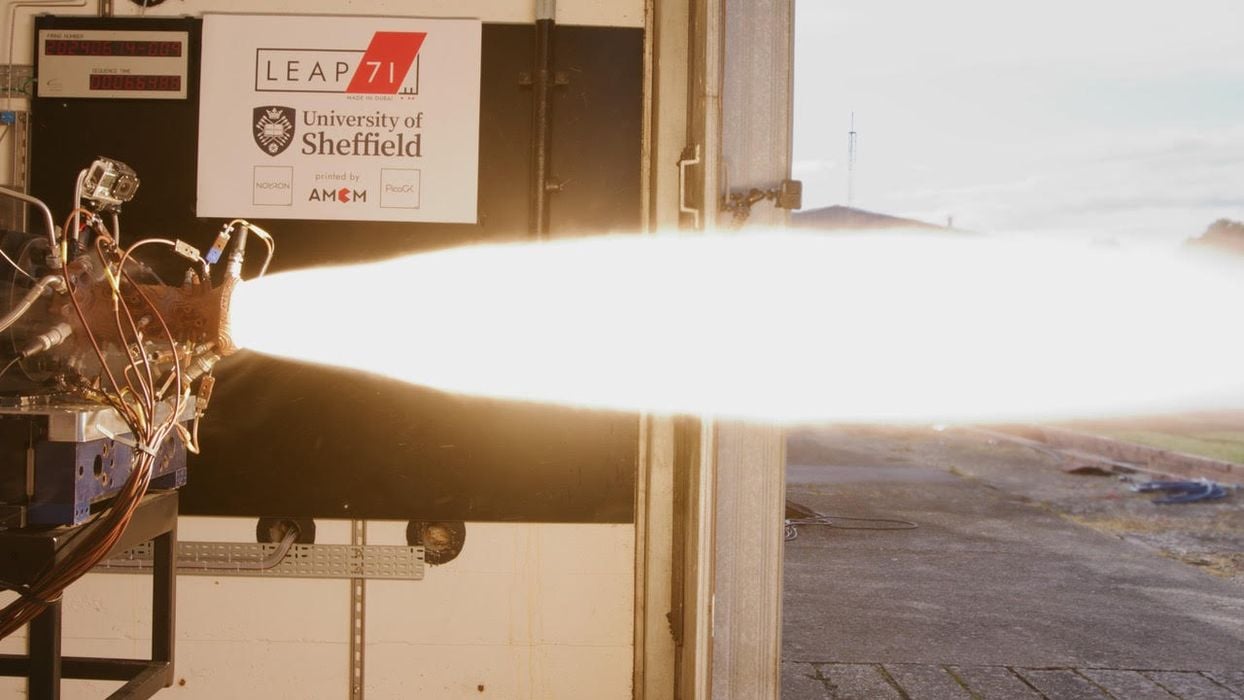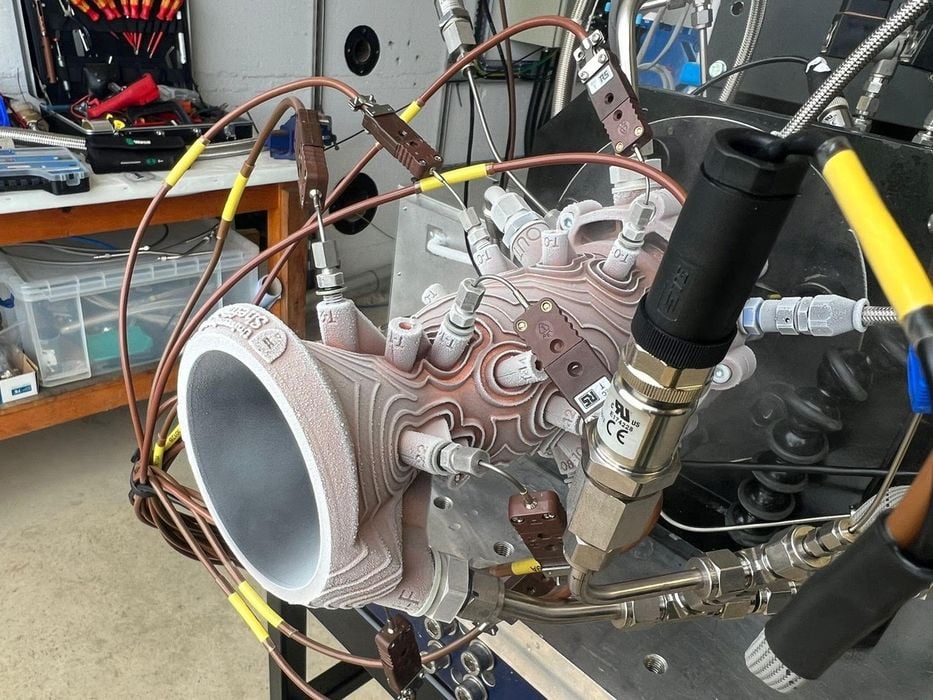
There’s been a major development for 3D printed aerospace: LEAP 71 has proven the viability of automatically designed rocket engines.
LEAP 71 is a software firm that has developed tools to perform “computational engineering”. The concept involves coding a specialized algorithm that representing the knowledge of a particular type of design. The algorithm can then be engaged to automatically generate a complete design for a specific variant within the design space.
That’s all cool, but could this approach really generate parts that actually work?
Yes, it can.
LEAP 71’s Large Computational Engineering Model, Noyron, was used to generate a rocket engine design – “autonomously without human intervention”. This design was then 3D printed in copper metal by AMCM, and shipped to the University of Sheffield for further testing.
The University was able to set up the part in a rocket test stand, and the results are shown at top. It fired successfully!

The rocket engine was not small; it produced 500kg thrust, equivalent to 20,000HP. The researchers apparently tested the engine with a long-duration burn, a step used to test the durability of the engine.
LEAP 71 co-founder Lin Kayser said:
“Our company is pioneering the new field of Computational Engineering, where sophisticated machines can be designed without human intervention. This radically accelerates the pace of innovation in the real world. The fact that the thruster worked on the first try, confirms that the approach is working. It can be applied to any field of engineering.”
My enthusiasm might seem a bit overblown, as there have been plenty of 3D printed rocket engines successfully fired in the past. But this one is different.
Earlier rocket engines were designed by humans and then fired. Here — the machine — designed the rocket engine. And it worked on the first attempt, on an industrial part that is notorious for being highly complex and prone to failure.
The implications here are quite staggering: in theory, this approach could be used to design all manner of highly complex parts for many industries without the need for human designers.
That could very well open up all kinds of fascinating possibilities that will no doubt change our lives in the future.
